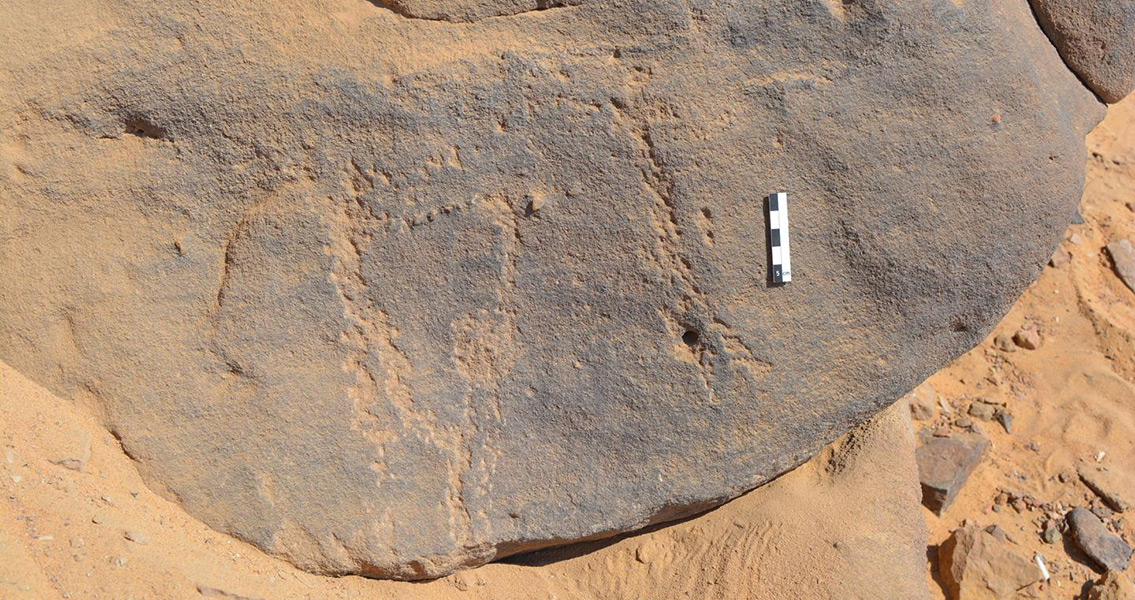<![CDATA[Archeologists working at a necropolis near Aswan have discovered rock art which predates the rise of Ancient Egypt. The team believe that the images could provide vital insight into the transition from the Neolithic period into Ancient Egyptian culture. Before the first Pharaoh, Narmer, unified Upper and Lower Egypt, and Ancient Egyptians left their mark on history with the rise of pyramids, necropolises and sphinxes; people were inhabiting the area around the River Nile. Alongside Mesopotamia, the Nile area is considered a cradle of civilisation in the Fertile Crescent, yet precious little is known about those people who lived there before the Pharaohs. The new discovery, made by egyptologists from the University of Bonn, could change that. Indeed, the Egyptian Ministry of Antiquities has awarded the egyptologists the accolade of unearthing one of the ten most important archaeological discoveries in Egypt. Dating back to the fourth millennium BCE, the paintings were engraved into the rock in the form of small dots, likely using a hard point. They depict hunting scenes, reminiscent of the kind found in shamanic paintings. Qubbet el-Hawa (hill of wind), the site where the engravings are located, has been a source of fascination for archaeologists for over a century. More than 80 burial mounds have been discovered in the hill overlooking Aswan through countless excavations. The necropolis, located in the provincial capital Elephantine, had a long history dating from around 2200 BCE to the fourth century BCE. The surrounding area was a vital trading base for Egyptians in Nubia, with their nobles buried in the plethora of burial mounds. The discovery of the Neolithic rock paintings adds a whole new dimension to the site. They were unearthed as part of an excavation started in 2015, and Prof. Ludgwig Morenz who led the dig said the significance of the engravings soon became apparent. "Style and iconography provide solid clues when dating these," he explained in a press release. "It opens up a new archeological dimension" Intriguingly, some of the engravings are clearly Ancient Egyptian - evidenced by their iconography and stylistics - while others clearly predate Ancient Egypt in their presentation method and motifs. The considerable age of the images makes them almost impossible to perceive, only tracing the outlines of the dots revealed the significant iconography. Three figures are depicted, a hunter with a bow, a dancing man with raised arms, and an African ostrich. "The archer clearly shows hunting for the large flightless bird, while the man with raised arms can be identified as a hunt dancer," said Morenz. It seems the dancer is wearing a bird mask, making the whole scene "reminiscent of the conceptual world of hunting, masks and shamanism, as known from many parts of the Earth - including of ostrich hunting by what are known as San (bushmen)." according to the press release from the University of Bonn. "This social practice and the associated complex of ideas have barely been looked at in Egyptology," said Prof. Morenz. Interestingly, small painted dancing female figures with bird masks and dating to the fourth millennium BCE have previously been discovered, as well as clay masks in the Upper Egyptian Hierakonpolis several years ago. Both earlier discoveries bear similarities to the newly found rock art. Prof. Morenz believes the engravings open up new avenues for research on a link between the ancient Near Eastern and even southern European Neolithic period and Ancient Egyptian culture. Clearly predating the necropolis, further investigation is needed on the engravings, which may be connected to a prehistoric network of trails at the site. © Photo: David Sabel ]]>
Rock Art Discovered in Egypt Predates the Rise of the Pharaohs
